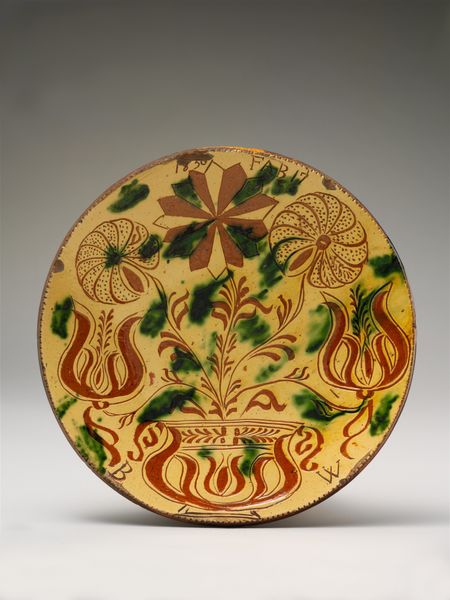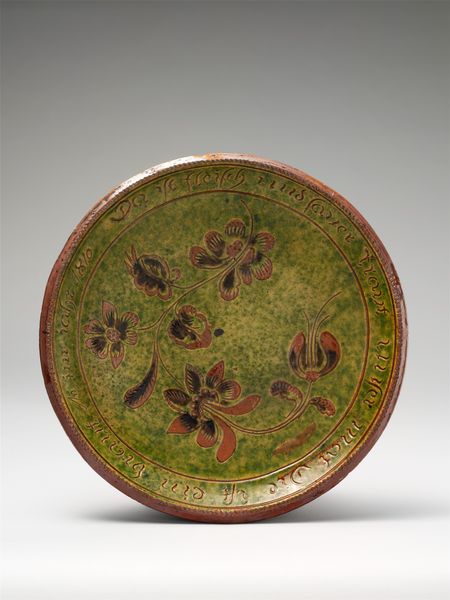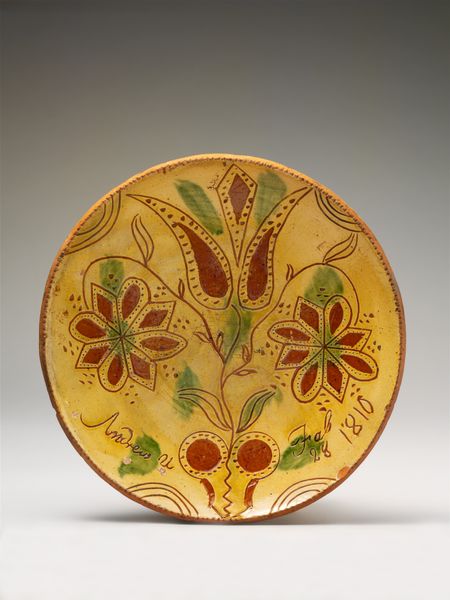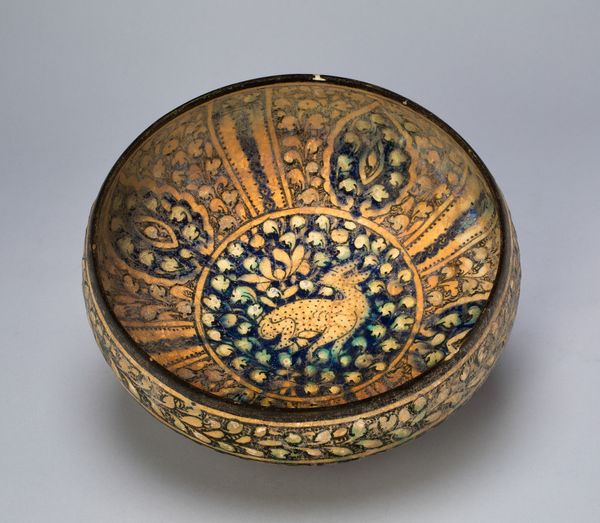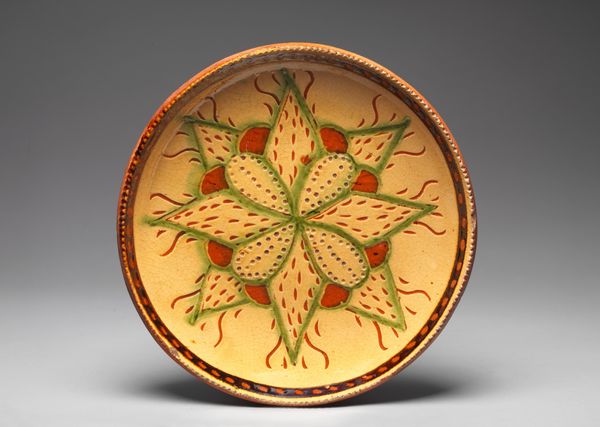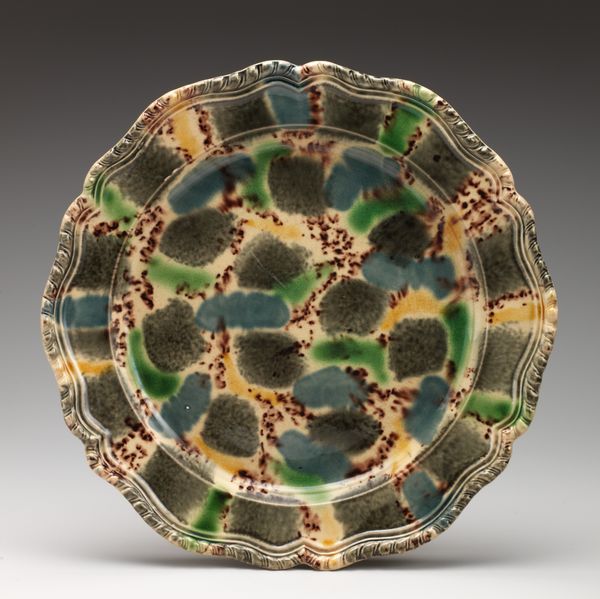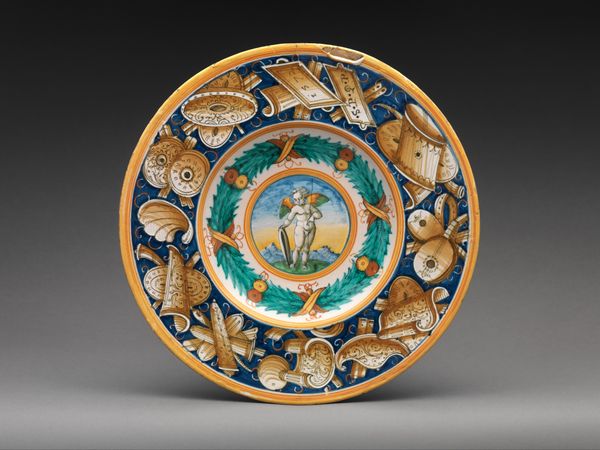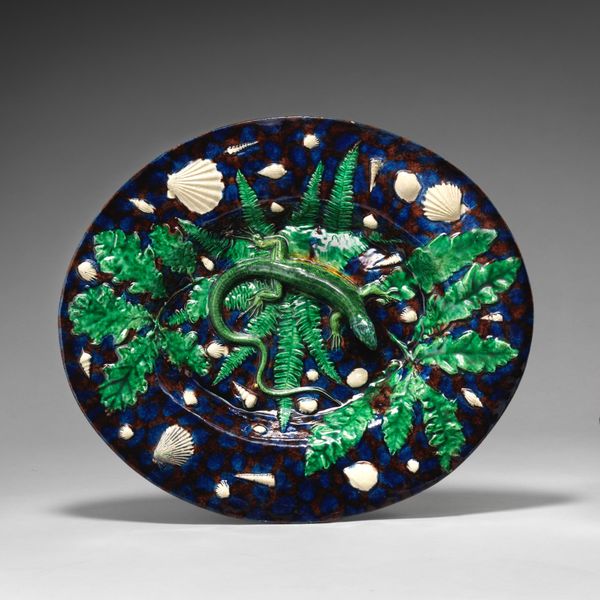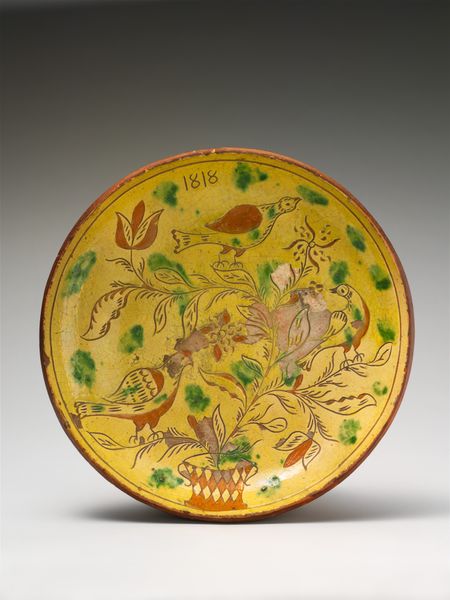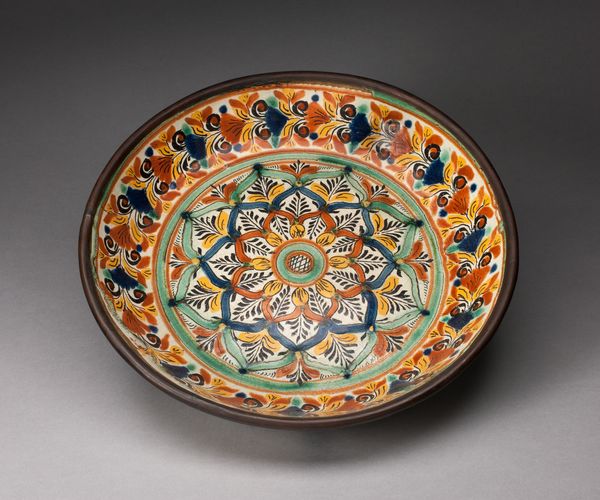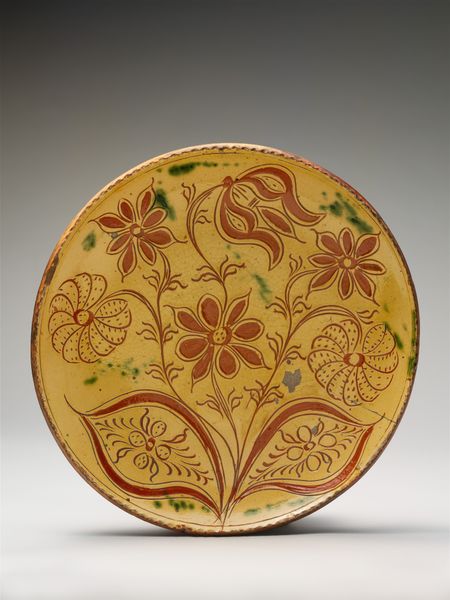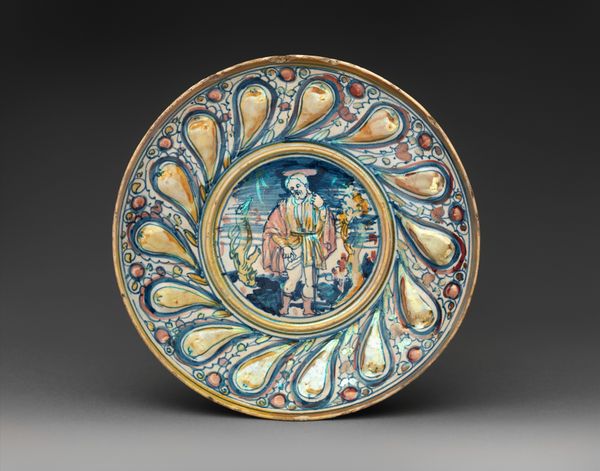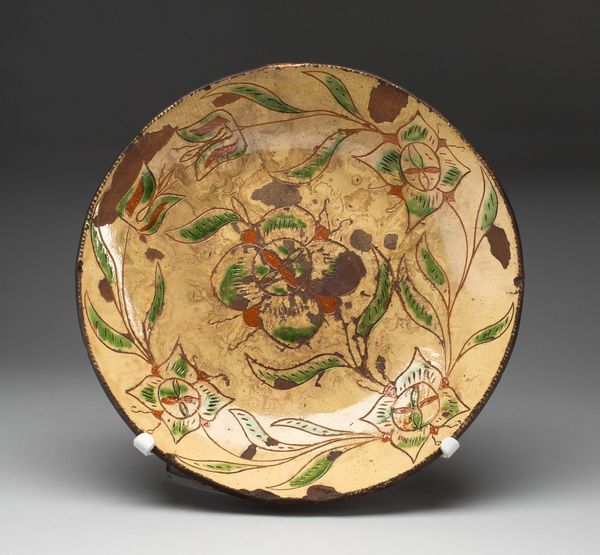
ceramic, earthenware
#
ceramic
#
earthenware
#
stoneware
#
folk-art
#
geometric
#
ceramic
#
abstraction
#
decorative-art
Dimensions: Diam. 9 3/4 in. (24.8 cm)
Copyright: Public Domain
Curator: Looking at this ceramic plate dating from 1815 to 1825, now residing at The Met, I'm struck by the vivid decorative quality—a bold contrast with the often restrained aesthetics of the period. Editor: It feels almost jarring, doesn't it? That acid green is so unapologetically bright, fighting against the darker floral motifs. There's something subversive about its defiance of classical elegance. Curator: Indeed! Plates like this represent a fascinating tension. Earthenware, a humble material, is here elevated through craftsmanship. We see echoes of folk art traditions asserting themselves, even as industrial production began to reshape society. The use of geometric forms within those floral patterns feels significant. Editor: And it brings up questions of access, too. Who was consuming art like this? Was it an expression of resistance or simply a reflection of regional tastes outside the urban centers of artistic power? The material speaks to accessibility, not necessarily high-end consumers, right? Curator: Absolutely. While we lack definitive documentation on its original maker or intended audience, such folk art ceramics frequently served celebratory and communal roles within more rural settings. Objects like this plate complicate traditional art hierarchies. Its very existence pushes back on the established "high art" narrative. Editor: This connects directly to current discussions around decolonization and repatriation within museums. Who gets to define what art is, what art is worthy of display, and who are its consumers? Thinking about art as functional or for 'the people' can redefine our engagement with decorative arts entirely. Curator: I concur. Pieces like this, which blend function and aesthetics, ask critical questions. The museum has a duty, in my opinion, to contextualize not only the object's historical manufacture, but to also engage with its potential re-evaluation and reinterpretations from contemporary viewpoints. Editor: I’m left thinking about the plate not only as an object, but as a starting point. It urges us to think about our own complicity and engagement within a culture that frequently overlooks work that challenges existing canons. Let’s make room for these vibrant, grassroots voices.
Comments
No comments
Be the first to comment and join the conversation on the ultimate creative platform.
